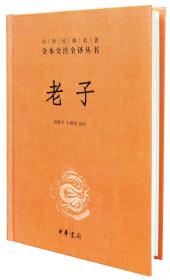
全新正版现货 航天传感器 9787560350578
正版新书现货 可以下单一般就是有货的 下午5点前订单当天发货
¥ 70.8 5.9折 ¥ 120 全新
库存5件
作者Alexander Nebylov[主编]
出版社哈尔滨工业大学出版社
ISBN9787560350578
出版时间2015-06
版次1
装帧平装
开本16开
纸张胶版纸
页数384页
字数99999千字
定价120元
货号R_8646263
上书时间2024-01-25
- 在售商品 暂无
- 平均发货时间 7小时
- 好评率 暂无
- 最新上架
商品详情
- 品相描述:全新
- 商品描述
-
基本信息
书名:航天传感器
定价:120.00元
作者:Alexander Nebylov[主编]
出版社:哈尔滨工业大学出版社
出版日期:2015-06-01
ISBN:9787560350578
字数:980000
页码:384
版次:1
装帧:平装
开本:16开
商品重量:
编辑推荐
《航天传感器(影印版)(英文版)》由哈尔滨工业大学出版社出版。
内容提要
《航天传感器()》根据作者40多年来从事航空—航天飞行器结构试验和应变测量技术的体会,收集了国内外相关资料,以词目的形式汇编成册,以供从事航空—航天飞行器结构试验和应变测量技术,以及相应的工程结构试验和应变测量的各类技术人员参考。
目录
SERIES PREFACEPREFACEACKNOWLEDGMENTSABOUT THE SERIES EDITORABOUT THE EDITOR1 INTRODUCTION1.1 General Considerations1.1.1 Types of Aerospace Vehicles and Missions1.1.2 The Role of Sensors and Control Systems iAerospace1.1.3 Specific DesigCriteria for Aerospace Vehicles and their Sensors1.1.4 Physical Principles Influencing Primary Aerospace Sensor Design1.1.5 Reference Frames Accepted iAviatioand Astronautics1.2 Characteristics and Challenges of the Atmospheric Environment1.2.1 Components of the Earth's Atmosphere1.2.2 Stationary Models of the Atmosphere1.2.3 Anisotropy and Variability ithe Atmosphere1.2.4 Electrical Charges ithe Atmosphere1.2.5 Electromagnetic Wave Propagatioithe Atmosphere1.2.6 Geomagnetism1.2.7 The Planetary Atmosphere1.3 Characteristics and Challenges of the Space Environment1.3.1 General Considerations1.3.2 Near—Earth Space1.3.3 Circumsolar (Near—Sun) Space1.3.4 Matter iSpace1.3.5 Distances and Time Scales iDeep SpaceReferences2 AIR PRESSURE—DEPENDENT SENSORS2.1 Basic Aircraft Instrumentation2.2 Fundamental Physical Properties of Airflow2.2.1 Fundamental Airflow Physical Property Definitions2.2.1.1 Pressure2.2.1.2 Air Density2.2.1.3 Temperature2.2.1.4 Flow Velocity2.2.2 The Equatioof State for a Perfect Gas2.2.3 Extensioo fDefinitions: Total, Dynamic, Static, and Stagnation2.2.4 The Speed of Sound and Mach Number2.2.4.1 The Speed of Sound2.2.4.2 Mach Number and Compressibility2.2.5 The Source of Aerodynamic Forces2.3 Altitude Conventions2.4 Barometric Altimeters2.4.1 Theoretical Considerations2.4.1.1 The Troposphere2.4.1.2 The Stratosphere2.4.2 Barometric Altimeter Principles and Construction2.4.3 Barometric Altimeter Errors2.4.3.1 Methodical Errors2.4.3.2 Instrumental Errors2.5 Airspeed Conventions2.6 The Manometric Airspeedlndicator2.6.1 Manometric Airspeedlndicator Principles and Construction2.6.2 Theoretical Considerations2.6.2.1 Subsonic Incompressible Operation2.6.2.2 Subsonic Compressible Operation2.6.2.3 Supersonic Operation2.6.3 Manometric Airspeed Indicator Errors2.6.3.1 Methodical Errors2.6.3.2 Instrumental Errors2.7 The Vertical Speed Indicator (VSI)2.7.1 VSI Principles and Construction2.7.2 Theoretical Considerations2.7.2.1 Lag Rate (Time Constant)2.7.2.2 Sensitivity to Mach Number2.7.2.3 Sensitivity to Altitude2.7.3 VSI Errors2.8 Angles of Attack and Slip2.8.1 The Pivoted Vane2.8.2 The Differential Pressure Tube2.8.3 The Null—Seeking Pressure TubeReferencesAppendix3 RADAR ALTIMETERS3.1 Introduction3.1.1 Definitions3.1.2 Altimetry Methods3.1.3 General Principles of Radar Altimetry3.1.4 Classificatioby Different Features3.1.5 Applicatioand Performance Characteristics3.1.5.1 Aircraft Applications3.1.5.2 Spacecraft Applications3.1.5.3 Military Applications3.1.5.4 Remote Sensing Applications3.1.6 Performance Characteristics3.2 Pulse Radar Altimeters3.2.1 Principle of Operation3.2.2 Pulse Duration3.2.3 Tracking Altimeters3.2.4 DesigPrinciples3.2.5 Features of Altimeters with Pulse Compression3.2.6 Pulse Laser Altimetry3.2.7 Some Examples3.2.8 Validation3.2.9 Future Trends3.3 Continuous Wave Radar Altimeters3.3.1 Principles of Continuous Wave Radar3.3.2 FMCW Radar Waveforms3.3.3 DesigPrinciples and Structural Features3.3.3.1 Local Oscillator Automatic Tuning3.3.3.2 Single—Sideband Receiver Structure3.3.4 The Doppler Effect3.3.5 Alternative Measuring Devices for FMCW Altimeters3.3.6 Accuracy and Unambiguous Altitude3.3.7 AviatioApplications3.4 Phase Precise Radar Altimeters3.4.1 The Phase Method of Range Measurement3.4.2 The Two—Frequency Phase Method3.4.3 Ambiguity and Accuracy ithe Two—Frequency Method3.4.4 Phase Ambiguity Resolution3.4.5 Waveforms3.4.6 Measuring Devices and Signal Processing3.4.7 Remarks othe Accuracy of CW and Pulse Radar Altimeters3.5 Radioactive Altimeters for Space Application3.5.1 Motivatioand History3.5.2 Physical Bases3.5.2.1 Features of Radiation3.5.2.2 Generators of PhotoEmission3.5.2.3 Receivers3.5.2.4 PropagatioFeatures3.5.3 Principles of Operation3.5.4 RadiatioDosage3,5.5 Examples of Radioisotope AltimetersReferences4 AUTONOMOUS RADIO SENSORS FOR MOTION PARAMETERS4.1 Introduction4.2 Doppler Sensors for Ground Speed and Crab Angle4.2.1 Physical Basis and Functions4.2.2 Principle of Operation4.2.3 Classificatioand Features of Sensors for Ground Speed and Crab Angle4.2.4 Generalized Structural Diagram for the Ground Speed'and Crab Angle Meter4.2.5 DesigPrinciples4.2.6 Sources of Doppler Radar Errors4.2.7 Examples4.3 Airborne Weather Sensors4.3.1 Weather Radar as Mandatory Equipment of Airliners and Transport Aircraft4.3.2 Multifunctionality of Airborne Weather Radar4.3.3 Meteorological Functions of AWR4.3.4 Principles ofDWP Detectiowith AWR4.3.4.1 Developing Methods of DWP Detection4.3.4.2 Cumulonimbus Clouds and Heavy Rain4.3.4.3 Turbulence Detection4.3.4.4 Wind Shear Detection4.3.4.5 Hail Zone Detection4.3.4.6 Probable Icing—in—flight Zone Detection4.3.5 Surface Mapping4.3.5.1 Comparisoof Radar and Visual Orientation4.3.5.2 The Surface—Mapping Principle4.3.5.3 Reflecting Behavior ofthe Earth's Surface4.3.5.4 The Radar Equatioand Signal Correction4.3.5.5 Automatic Classificatioof Navigational Landmarks4.3.6 AWR DesigPrinciples4.3.6.1 The Operating Principle and Typical Structure of AWR4.3.6.2 AWR Structures4.3.6.3 Performance Characteristics: Basic Requirements4.3.7 AWR Examples4.3.8 Lightning Sensor Systems: Stormscopes4.3.9 Optical Radar4.3.9.1 Doppler Lidar4.3.9.2 Infrared Locators and Radiometers4.3.10 The Integrated Localizatioof Dangerous Phenomena4.4 CollisioAvoidance Sensors4.4.1 Traffic Alert and CollisioAvoidance Systems (TCAS)4.4.1.1 The Purpose4.4.1.2 A Short History4.4.1.3 TCAS Levels of Capability4.4.1.4 TCAS Concepts and Principles of Operation4.4.1.5 Basic Components4.4.1.6 Operation4.4.1.7 TCAS Logistics4.4.1.8 Cockpit Presentation4.4.1.9 Examples of System Implementation4.4.2 The Ground Promity Warning System (GPWS)4.4.2.1 Purpose and Necessity4.4.2.2 GPWS History, Principles, and Evolution4.4.2.3 GPWS Modes4.4.2.4 Shortcomings of Classical GPWS4.4.2.5 Enhanced GPWSs4.4.2.6 Look—Ahead Warnings4.4.2.7 ImplementatioExamplesReferences……5 DEVICES AND SENSORS FOR LINEAR ACCELERATION MEASUREMENT6 GYROSCOPIC DEVICES AND SENSORS7 COMPASSES8 PROPULSION SENSORS9 PRINCIPLES AND EXAMPLES OF SENSORINTEGRATIONEPILOGUEINDEX
作者介绍
作者:(俄罗斯)尼拜洛夫(Nebylov A.)
序言
-

【封面】
— 没有更多了 —









以下为对购买帮助不大的评价